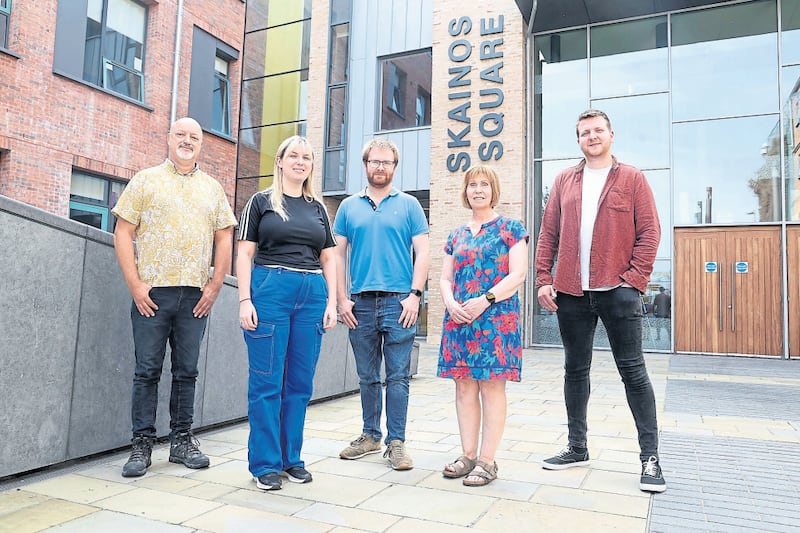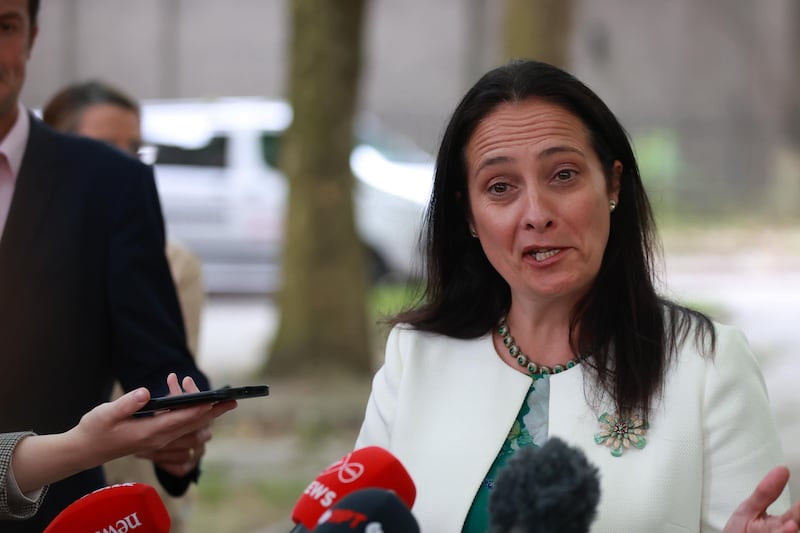The widely held belief that there are dhá náisiún - ‘two nations’ in Ireland, or more specifically in Ulster, is increasingly difficult to sustain, wrote Peter Collins in another chapter in the Gael Linn produced, Aspects of a Shared Heritage, booklet.
He goes on to stay that bhí sinsear Gaelach agus Briotanach ag Caitlicigh agus ag Protastúnaigh araon - Catholics and Protestants both have Gaelic and British antecedents.
“The Ulster Protestant Gaelic tradition originates with lonnaitheoirí Albanacha - Scottish settlers who arrived in the 17th century. “Labhair cuid mhór acu Gaeilge - many of them spoke Gaelic or were of Gaelic extraction.”
The Gaelicisation of Scotland began around 500 AD, when Fergus Mór mac Ere extended his kingdom of Dál Riada from northeast Ulster to the west of Scotland.”
Another powerful Gaelic influence was Colm Cille who, at the end of the 6th century converted most of Scotland to the Celtic form of Christianity.
Cináed mac Ailpín (Kenneth McAlpine) established a united Gaelic Kingdom of Scotland in the 9th century and by the 11th century, a cultural and linguistic continuum stretched from Kerry to the north of Scotland.
Bhí foirm scríofa na teanga mar a gcéanna sa dá thír - The written form of the language was identical in both countries. However, the success of the Protestant reformation among the Gaels in Scotland was in marked contrast to its failure in Ireland.
Most Scottish Gaels became adherents of the Calvinism of John Knox but this did not lead to a linguistic break. In fact, Knox’s Book of Common Order 1567 aistríodh go Gaeilge é - it was translated into Gaelic, the foreword inscribed “For the men of Scotland and Ireland”.
The Anglican Book of Common Prayer was also translated into Gaelic in the same year by Séon Carsuel, as Foirm na nUrrnuidheadh. The arrival of so many Scottish Gaelic speakers meant that Ulster in the 17th century continued to be the most Gaelic of the provinces.
(We tend to use Gaeilge for Irish and Gàidhlig for Scottish Gaelic)
The Presbyterian Gaelic speakers of course needed ministers who conducted worship in their own tongue, which is well illustrated in the contemporary account from 1711: “I met many of the Inhabitants, especially of the Barronies of Gleann Arma - Glenarm, Dunluce and Killconaway, who could not speak the English tongue; and asking them in Irish what religion they profess’d, they answered they were Presbyterians...”
The Presbyterian Synod of Ulster ensured that its students for the ministry learned Irish.
Significant numbers of native Irish were converted to Protestantism and many English or lucht labhartha na hAlbainise - Scots-speakers learned Irish, the day-to-day language of their new homeland. Add the factors of intermarriage and the Anglicisation of Gaelic surnames and one wonders what tiny fraction of the Protestant population of Ulster has no Gaelic background?
Dinnseanchas
Annahunshigo - Eanach Uinseogach - a hilltop abounding in ashtrees This interesting place-name came to my attention when I read a tweet by Quincy Dougan - “Unashamed Ulster Loyalist, Orangeman, Unionist, historian - about a talk he was giving at Annahunshigo Orange Hall about The Battle of Dolly’s Brae which took place on 12th July, 1849.
According to the song-collector John Moulden, there are about twelve songs from both traditions about the battle.
“The skirmish was the bloodiest encounter between Catholics and Orangemen since the foundation of the Order in 1795,” wrote Moulden.
Government estimates placed the number of dead Catholics at over thirty, with no casualties among the Orangemen and one injury on the police side. I wonder if Quincy got round to teaching how Annahunshigo got its name?
Seanfhocal
As a ceann a bhlitear an bhó - The cow is milked from the head.
You are what you eat, they say. The quality of the milk you get will depend on the quality of what your cows eat. The better fed they are, the healthier they will be and the better the milk they will produce.
We can see the same thing in humans – not that I’ve ever tried to milk a human! – but young people are generally taller than their parents.
Some of this is to do with the quality of the food they are eating although not every scientist agrees that this is a major cause.
However, according to the BBC: “Average height in the UK rose by 3.9in (10cm) during the 20th Century, and up to 7.8in in other countries, as nutritional health improved.”







